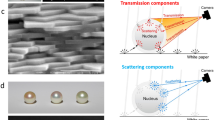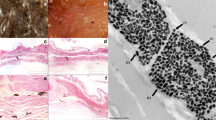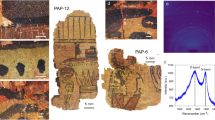Abstract
THE subject of artificial pearl induction, I venture to suggest, affords an excellent example of comparative pathology. Dr. Lyster Jameson's diagram in NATURE of May 26, p. 396, might well pass as an illustration of “pearls” frequently found in the human body. Such “pearls” are commonly seen in papillomata of the skin and at muco-cutaneous areas, but they can also be demonstrated in the tonsils, brain-coverings, thymus and thyroid glands, etc. Those which are epidermal become keratinoid, but others of deeper origin are often calcified.
This is a preview of subscription content, access via your institution
Access options
Subscribe to this journal
Receive 51 print issues and online access
$199.00 per year
only $3.90 per issue
Buy this article
- Purchase on Springer Link
- Instant access to full article PDF
Prices may be subject to local taxes which are calculated during checkout
Similar content being viewed by others
Author information
Authors and Affiliations
Rights and permissions
About this article
Cite this article
WINGRAVE, W. The Japanese Artificially Induced Pearl. Nature 107, 620–621 (1921). https://doi.org/10.1038/107620a0
Issue Date:
DOI: https://doi.org/10.1038/107620a0
Comments
By submitting a comment you agree to abide by our Terms and Community Guidelines. If you find something abusive or that does not comply with our terms or guidelines please flag it as inappropriate.



